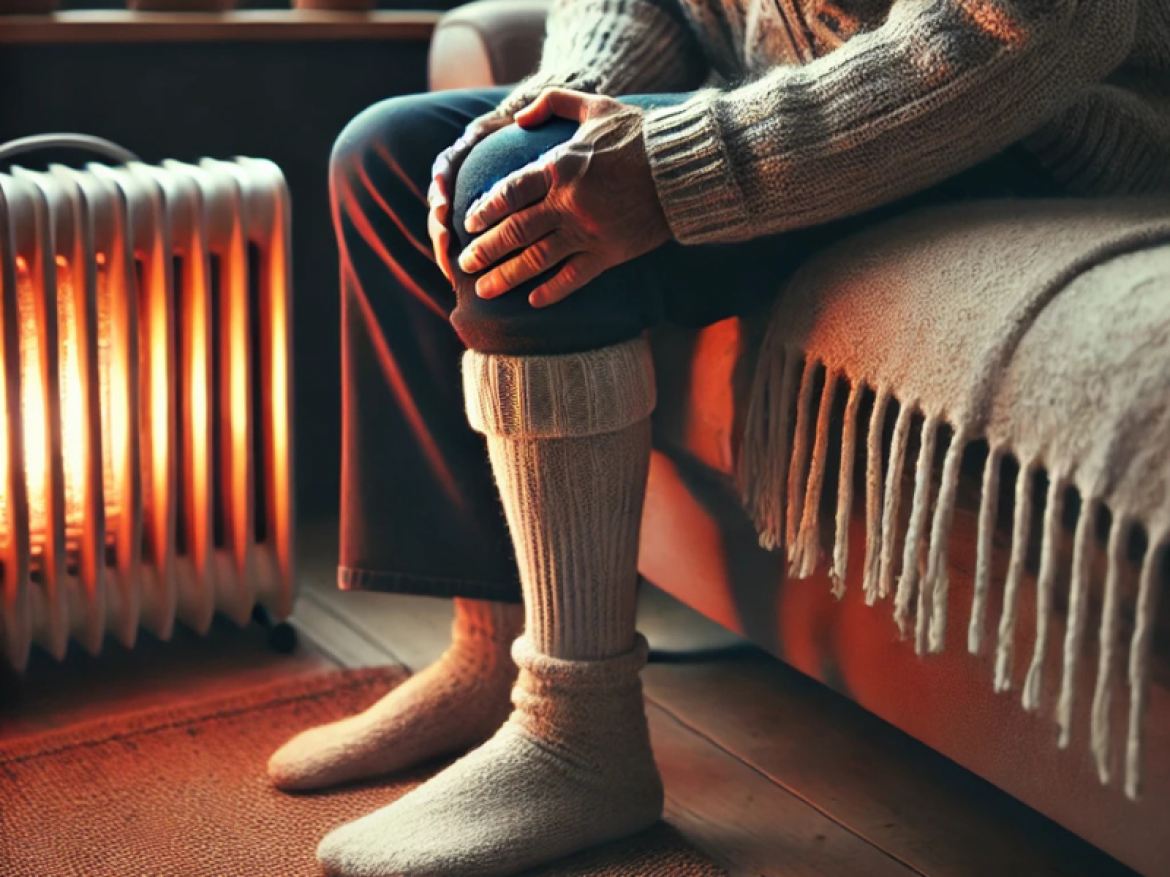Winter can be a challenging season for seniors, especially those dealing with chronic knee pain. The drop in temperature often intensifies joint discomfort, limiting mobility and affecting daily life. Understanding the causes, taking preventive measures, and exploring non-surgical treatment options can help seniors stay pain-free. With insights from knee pain consultant in Kolkata, Dr. Krishna Poddar, let’s explore how to manage knee pain effectively during winter.
Causes of Winter Knee Pain in Seniors
- Cold-Induced Stiffness
Low temperatures can cause muscles and joints to stiffen, reducing flexibility and increasing discomfort in the knees. - Barometric Pressure Changes
A drop in barometric pressure before cold weather can cause tissues in the knee to expand, putting pressure on nerves and leading to pain. - Reduced Physical Activity
Seniors tend to stay indoors during winter, reducing their activity levels. This inactivity can weaken the muscles supporting the knees, exacerbating pain. - Existing Conditions
Chronic conditions like osteoarthritis or rheumatoid arthritis often worsen during winter due to inflammation and decreased circulation.
Prevention Tips for Winter Knee Pain
- Stay Active Indoors
Light exercises like yoga, stretching, or walking indoors can keep joints flexible and reduce stiffness. - Dress Warmly
Wear knee warmers or thermal clothing to maintain joint warmth and prevent stiffness caused by cold temperatures. - Stay Hydrated
Dehydration can reduce joint lubrication. Drinking adequate water ensures joints remain well-lubricated even in cold weather. - Eat Joint-Friendly Foods
Include foods rich in omega-3 fatty acids, calcium, and vitamin D to strengthen bones and reduce inflammation. - Maintain a Healthy Weight
Excess weight puts extra pressure on the knees, worsening pain. A balanced diet and regular exercise can help manage weight effectively.
Non-Surgical Treatment Options for Winter Knee Pain
- Physical Therapy
A customized physical therapy routine can strengthen muscles, improve joint stability, and reduce pain. Consult a specialist like Dr. Krishna Poddar, a trusted knee pain consultant in Kolkata, for personalized guidance. - Hot and Cold Therapy
Applying heat pads can relieve stiffness, while cold packs reduce inflammation and swelling in the knees. - PRP Therapy
Platelet-Rich Plasma (PRP) therapy involves injecting a concentrated solution of the patient’s platelets into the knee to promote healing and reduce inflammation. - Hyaluronic Acid Injections
This treatment lubricates the joints, reducing friction and pain, especially for seniors with osteoarthritis. - Medications and Supplements
Over-the-counter pain relievers, anti-inflammatory medications, or joint supplements like glucosamine and chondroitin can provide relief. Always consult a doctor before starting any medication. - Low-Impact Exercises
Activities like swimming, cycling, or gentle stretching can strengthen the knees without causing strain.
Expert Advice from Dr. Krishna Poddar
If you’re dealing with persistent knee pain, consulting a specialist is crucial. Dr. Krishna Poddar, a renowned knee pain consultant in Kolkata, offers comprehensive evaluations and tailored non-surgical treatments to address winter knee pain. Her expertise ensures seniors regain mobility and enjoy an improved quality of life.
FAQs
- Why does knee pain worsen in winter?
Cold temperatures can stiffen muscles and joints, while changes in barometric pressure may increase joint discomfort. Reduced activity during winter also contributes to worsening knee pain. - Can I prevent knee pain during winter?
Yes, staying active, dressing warmly, maintaining a healthy weight, and following a joint-friendly diet can help prevent knee pain during winter. - Is PRP therapy effective for knee pain?
Yes, PRP therapy is a minimally invasive treatment that promotes tissue repair and reduces inflammation, making it effective for managing knee pain. - When should I see a doctor for knee pain?
If knee pain persists despite home remedies or interferes with daily activities, consult a specialist. - Are there non-surgical ways to treat severe knee pain in seniors?
Yes, physical therapy, PRP therapy, hyaluronic acid injections, and lifestyle modifications are effective non-surgical options for managing severe knee pain.
Conclusion
Winter knee pain can be a significant challenge for seniors, but it doesn’t have to limit their mobility or quality of life. By understanding the causes, taking preventive steps, and exploring non-surgical treatments, seniors can effectively manage knee pain during the colder months. For expert care, reach out to Dr. Krishna Poddar, a trusted knee pain consultant in Kolkata, and take the first step toward pain-free living.

